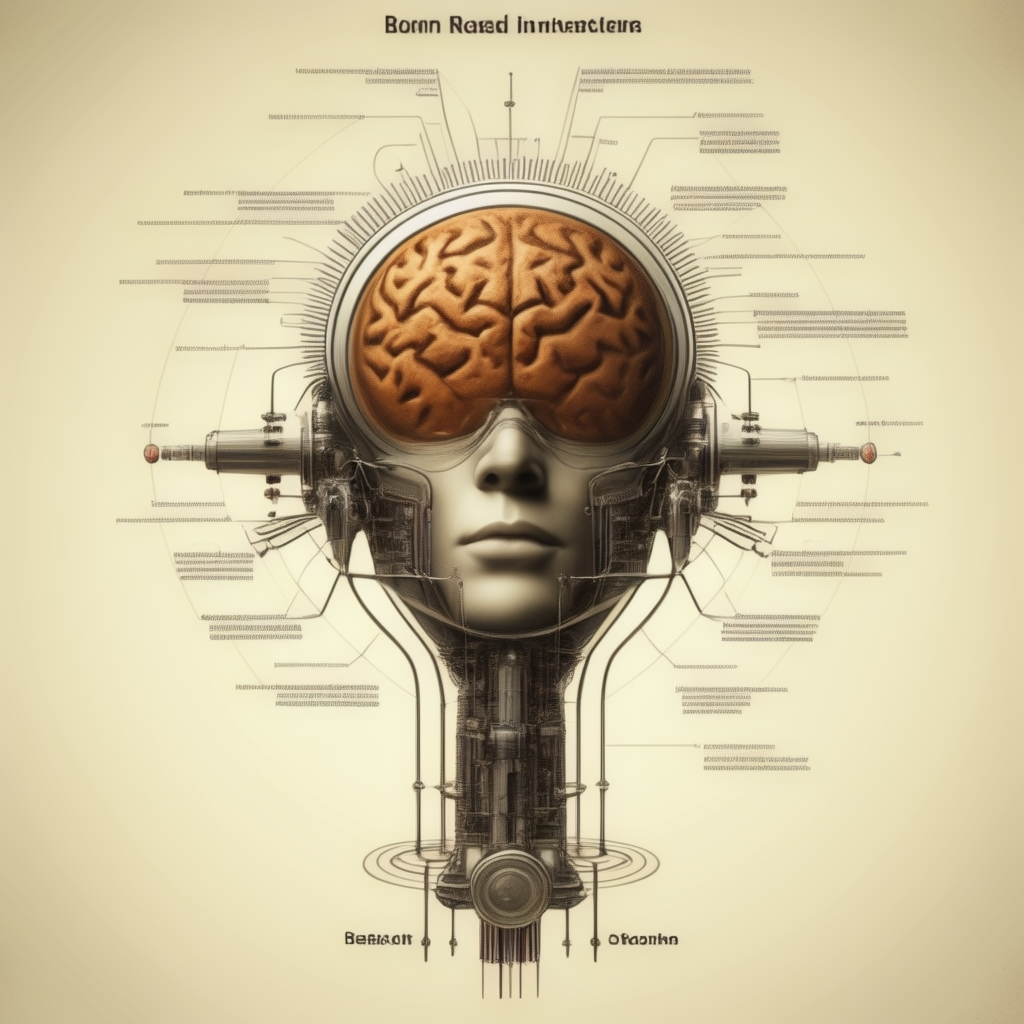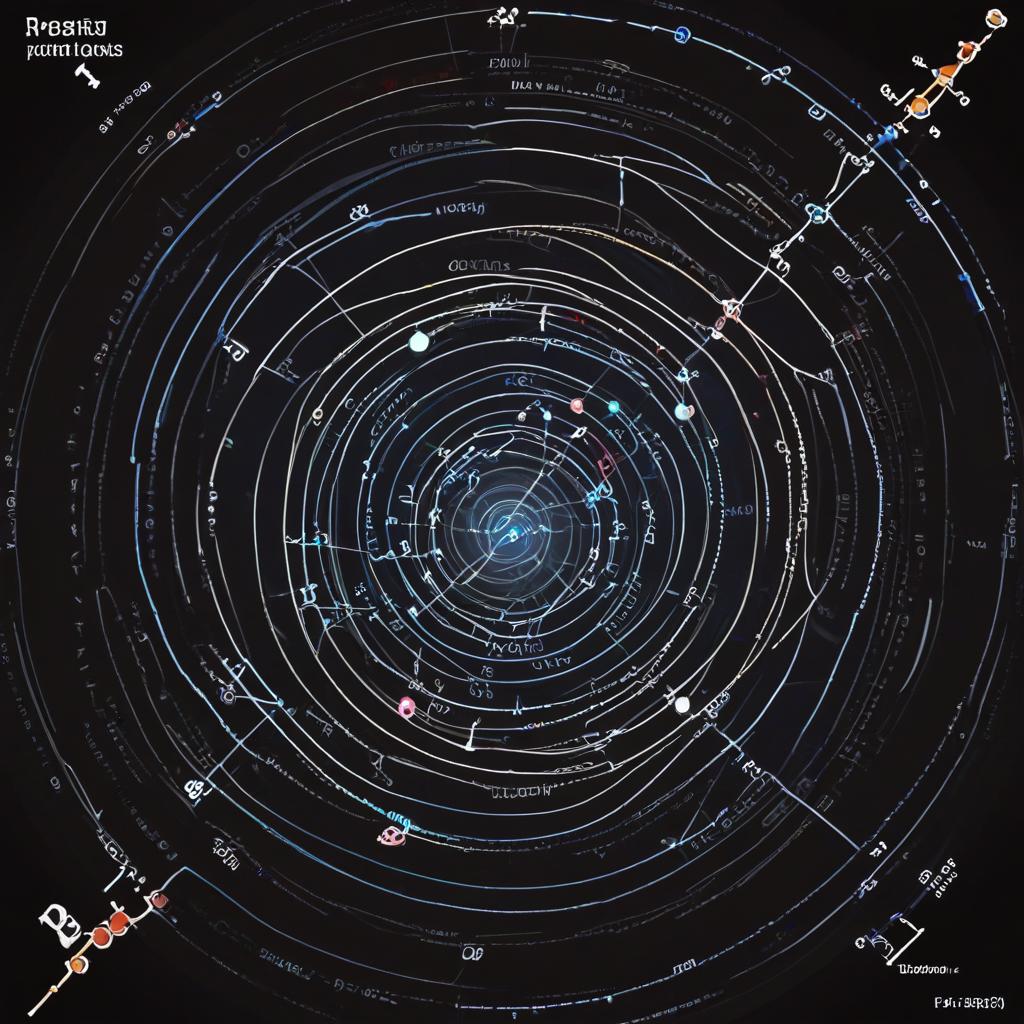Understanding Agent Behavior in Artificial Intelligence: The Agent Function and Percept Sequence
In the world of Artificial Intelligence (AI), the concept of an agent is central to understanding how intelligent systems interact with their environment. Whether it’s a simple chatbot, a complex self-driving car, or a sophisticated financial trading system, the underlying principles of agent behavior remain the same. At the core of this behavior is something called the agent function. Mathematically speaking, the agent function is a critical concept that describes how an agent decides on actions based on the information it perceives from its environment. In this blog post, we will delve into what the agent function is, how it works, and why it is essential in the field of AI.
1. What is an Agent in AI?
Before diving into the agent function, it’s important to understand what an agent is. In AI, an agent is any entity that perceives its environment through sensors and acts upon that environment using actuators. The environment can be anything from the physical world, like a robot navigating a room, to a virtual world, like a software agent interacting with a user in a web application.
An agent’s goal is to achieve a certain objective, which it does by taking actions that affect the environment. The success of an agent is measured by its ability to fulfill its objective efficiently and effectively.
2. The Percept Sequence
The term percept refers to the agent’s perceptual input at any given moment—essentially, the data it receives from its environment. This could be visual data, sensor readings, user inputs, or any other form of information.
A percept sequence is the complete history of everything the agent has perceived so far. This sequence is crucial because an agent’s actions depend not just on its current percept but on the entire sequence of percepts it has encountered up to that point. For example, in a game of chess, the current board state (percept) matters, but so do the previous moves (percept sequence) that led to this state.
3. The Agent Function
The agent function is a mathematical abstraction that describes the agent’s behavior. It is a function that maps any given percept sequence to an action. Mathematically, this can be expressed as:
f:P∗→Af: P^* \rightarrow Af:P∗→A
where:
- P∗P^*P∗ is the set of all possible percept sequences.
- AAA is the set of all possible actions.
- fff is the agent function that maps a percept sequence p1,p2,…,pnp_1, p_2, …, p_np1,p2,…,pn to an action aaa.
This function essentially encapsulates the decision-making process of the agent. Given a specific history of percepts, the agent function determines the next action the agent should take. The beauty of this abstraction is that it allows us to describe the behavior of any agent, regardless of its complexity, in a simple and unified way.
4. Types of Agent Functions
Agent functions can vary greatly depending on the type of agent and the complexity of the environment. Some common types include:
- Simple Reflex Agents: These agents act solely based on the current percept, ignoring the history of percepts. The agent function for a simple reflex agent is typically a set of condition-action rules.
- Model-Based Reflex Agents: These agents maintain an internal state that depends on the history of percepts. The agent function considers both the current percept and the internal state to decide the next action.
- Goal-Based Agents: These agents not only consider the current state but also have a goal in mind. The agent function includes goal information to choose actions that bring the agent closer to its goal.
- Utility-Based Agents: These agents aim to maximize a utility function, which represents the agent’s preferences. The agent function selects actions that maximize expected utility based on the percept sequence.
5. Implementing the Agent Function
In practice, implementing the agent function involves designing algorithms that can process the percept sequence and produce appropriate actions. This can range from simple if-then rules for basic agents to complex machine learning models for advanced agents.
For instance, in a reinforcement learning agent, the agent function is often represented by a policy, which is learned over time through interactions with the environment. The policy maps percept sequences (or states) to actions that maximize some notion of cumulative reward.
6. Why is the Agent Function Important?
Understanding the agent function is critical for several reasons:
- Predictability: By defining an agent function, we can predict an agent’s actions based on its percept sequence. This is essential for designing agents that behave reliably and safely.
- Optimization: The agent function allows us to optimize agent behavior by tweaking the function to improve performance, efficiency, or goal attainment.
- Design: When designing AI systems, thinking in terms of the agent function helps in structuring the decision-making process, whether it’s for simple rule-based systems or complex learning algorithms.
7. Challenges and Considerations
While the agent function is a powerful concept, there are challenges in designing and implementing it:
- Scalability: As the environment and percept sequence grow in complexity, the agent function may become too complex to handle efficiently. Advanced techniques like function approximation, neural networks, or hierarchical models may be necessary.
- Uncertainty: In many environments, the percept sequence may not fully capture the state of the world, leading to uncertainty. The agent function must account for this, often by incorporating probabilistic reasoning or learning from incomplete information.
- Ethics and Bias: The decisions made by the agent function can have real-world consequences, making it important to ensure that the function is fair, unbiased, and aligned with ethical considerations.
9. Agent Function as a Deterministic vs. Stochastic Model
The agent function can be deterministic or stochastic, depending on how it maps percept sequences to actions:
- Deterministic Agent Function: In this model, for a given percept sequence, the agent function always produces the same action. This predictability is useful in environments where the outcome of actions is certain. However, deterministic models can be limiting in complex, real-world environments where uncertainty and variability are inherent.
- Stochastic Agent Function: Here, the agent function produces a probability distribution over possible actions rather than a single action. This approach is more flexible, allowing the agent to handle uncertainty and adapt to dynamic environments. Stochastic models are often employed in situations where actions have probabilistic outcomes, such as in reinforcement learning or game-playing scenarios.
10. The Role of Memory in Agent Functions
Memory plays a crucial role in the effectiveness of the agent function. The agent function can leverage memory in several ways:
- Short-Term Memory: Some agents utilize short-term memory to keep track of recent percepts. This is particularly useful in environments where the most recent changes are the most relevant to decision-making. For example, a robot navigating through a maze might rely on short-term memory to remember the last few turns.
- Long-Term Memory: In more complex agents, long-term memory stores information that could be relevant over extended periods. This could include knowledge about the environment, learned experiences, or even specific strategies that have worked well in the past. Long-term memory enhances the agent’s ability to make informed decisions based on accumulated knowledge.
- Working Memory: This is a combination of short-term and long-term memory, where the agent actively manipulates and updates its memory to make decisions. In cognitive architectures, working memory is essential for tasks that require complex reasoning, such as planning or problem-solving.
11. Agent Function in Multi-Agent Systems
In many scenarios, an agent operates not in isolation but within a system of multiple agents, known as a multi-agent system (MAS). Here, the agent function must consider not only the percept sequence from the environment but also the actions and states of other agents:
- Cooperative Multi-Agent Systems: In these systems, agents work together to achieve a common goal. The agent function must coordinate with other agents to ensure optimal group performance. This involves communication, shared goals, and sometimes joint action sequences.
- Competitive Multi-Agent Systems: In competitive environments, like in adversarial games or markets, the agent function must anticipate and counteract the strategies of other agents. Game theory often informs the design of these agent functions, enabling agents to predict opponents’ moves and plan counter-strategies.
- Hybrid Systems: These involve both cooperation and competition among agents. The agent function in such systems must be flexible, balancing between collaboration and competition based on the context.
12. Hierarchical Agent Functions
In complex environments, a single-layer agent function might not suffice. Hierarchical agent functions break down the decision-making process into multiple layers or levels, each responsible for different aspects of behavior:
- High-Level Planning: At the top of the hierarchy, the agent function might focus on long-term goals and strategies, deciding on broad actions that steer the agent toward its objectives.
- Mid-Level Control: The middle layer could handle more specific tasks, such as navigating a particular environment or managing resources.
- Low-Level Execution: At the base level, the agent function deals with immediate actions, reacting to the current percepts with precise, often pre-defined responses.
Hierarchical agent functions allow for more scalable and modular designs, enabling agents to handle complex tasks by breaking them down into manageable sub-tasks.
13. Learning and Adaptation in Agent Functions
One of the most powerful aspects of agent functions in modern AI is the ability to learn and adapt over time. Traditional, static agent functions are limited by the rules or logic defined at the outset. However, adaptive agent functions can modify themselves based on experiences:
- Supervised Learning: In supervised learning, the agent function is trained using a dataset of percept sequences and corresponding correct actions. The function learns to map inputs to outputs by minimizing the error between its predictions and the actual actions.
- Reinforcement Learning: Here, the agent function is not explicitly told which actions to take. Instead, it learns by receiving rewards or penalties based on the outcomes of its actions. Over time, the agent function adjusts to maximize cumulative rewards, leading to optimal behavior.
- Unsupervised Learning: In some cases, the agent function can learn patterns or structures in the percept sequence without any explicit feedback. This is particularly useful in environments where labeled data is not available, and the agent must discover useful behaviors on its own.
14. Exploration vs. Exploitation Dilemma
In adaptive agent functions, particularly those based on reinforcement learning, there’s a critical balance between exploration (trying new actions to discover their effects) and exploitation (choosing actions known to yield good results):
- Exploration: If the agent function explores too much, it may waste time on suboptimal actions, slowing down the learning process.
- Exploitation: If the agent function exploits too much, it may miss out on better strategies or actions that could lead to higher rewards.
Designing an agent function that effectively balances exploration and exploitation is key to developing intelligent agents that can learn and adapt efficiently.
15. Temporal Aspects and Agent Functions
Time plays a significant role in how agent functions operate. Some agent functions are time-independent, meaning that the timing of percepts does not affect the action chosen. However, many real-world scenarios require time-dependent agent functions:
- Real-Time Agents: In real-time environments, the agent function must make decisions within strict time constraints. For instance, a self-driving car’s agent function must process sensor data and decide on actions within milliseconds to ensure safety.
- Delayed Rewards: In some cases, the consequences of actions may not be immediate. The agent function must consider not just the immediate percepts but also potential future rewards or penalties, requiring sophisticated mechanisms like discounting or temporal difference learning.
- Temporal Abstractions: Some agent functions use temporal abstractions, where actions or strategies span over extended periods, such as a robot planning a multi-step task or a financial trading agent deciding on long-term investments.
16. Ethical Considerations in Agent Functions
As AI systems become more integrated into society, ethical considerations in designing agent functions are increasingly important:
- Bias in Agent Functions: If the data used to train an agent function is biased, the function may produce biased actions. This can lead to unfair or discriminatory outcomes, particularly in sensitive areas like hiring, law enforcement, or healthcare.
- Accountability: When agent functions make decisions that impact human lives, there must be clear accountability. Understanding how the agent function maps percepts to actions is crucial for diagnosing and rectifying errors or harmful decisions.
- Transparency: There’s a growing demand for AI systems to be transparent about how decisions are made. This often requires designing agent functions that are interpretable, allowing humans to understand the reasoning behind the agent’s actions.
17. Robustness and Resilience in Agent Functions
In real-world applications, agent functions must be robust and resilient to handle unexpected situations or adversarial conditions:
- Noise and Uncertainty: In noisy environments, where percepts might be corrupted or incomplete, the agent function needs to be robust enough to still make good decisions. Techniques like filtering, probabilistic reasoning, and robust optimization are often employed.
- Adversarial Attacks: In competitive environments, agents might face adversarial attacks designed to mislead them. For example, adversarial examples in image recognition can trick an AI into making incorrect decisions. A resilient agent function should be able to detect and mitigate the impact of such attacks.
- Error Handling: Agents in the real world will inevitably encounter errors, either in their own actions or due to environmental factors. The agent function should include mechanisms for error detection and recovery, ensuring the agent can continue to operate effectively despite disruptions.
18. Social and Cultural Contexts in Agent Functions
Agents operating in human environments must often consider social and cultural contexts when making decisions:
- Social Norms and Etiquette: In environments where agents interact with humans, the agent function should consider social norms and etiquette. For example, a conversational agent should recognize polite language and respond accordingly, while a robot in a public space should respect personal boundaries.
- Cultural Sensitivity: The agent function should be sensitive to cultural differences, especially in global applications. This might involve adapting behaviors based on cultural context, such as differing communication styles or varying interpretations of actions.
- Ethical AI and Fairness: Ensuring that agent functions operate fairly and do not reinforce harmful stereotypes or biases is crucial in diverse, multi-cultural environments. This requires careful consideration of the training data, decision-making logic, and impact assessment of the agent function.
19. Agent Functions and Human-AI Collaboration
As AI systems increasingly collaborate with humans, the design of agent functions must facilitate effective human-AI interaction:
- Human-AI Teaming: In collaborative environments, such as in healthcare, military operations, or creative industries, the agent function must complement human actions. This might involve the agent function adapting to human preferences, learning from human feedback, or even anticipating human needs.
- Explainability and Trust: For humans to trust AI systems, the agent function must be explainable. This means that the agent can justify its actions in a way that is understandable to humans, leading to greater trust and collaboration.
- Adaptive Assistance: In assistive technologies, the agent function must adapt to the user’s abilities, preferences, and context. For example, an AI assistant for the elderly might adjust its behavior based on the user’s cognitive and physical capabilities.
20. Scalability and Efficiency of Agent Functions
As the complexity of tasks and environments grows, agent functions must scale efficiently:
- Computational Efficiency: The agent function should be designed to operate within the computational constraints of the system, ensuring real-time performance even as the complexity of the environment increases.
- Scalability Across Domains: Ideally, an agent function should be adaptable to different domains without requiring complete retraining or redesign. This might involve using transfer learning, modular architectures, or hierarchical decision-making to enable the agent to operate effectively across various tasks.
- Parallelism and Distributed Agent Functions: In large-scale systems, agent functions might be distributed across multiple processors or even across different physical locations. This requires coordination mechanisms to ensure that the distributed agent functions work together harmoniously.
21. Future Trends in Agent Functions
Looking ahead, several trends are likely to shape the development of agent functions:
- Hybrid AI Models: Future agent functions might combine different AI paradigms, such as symbolic reasoning with deep learning, to create more versatile and powerful agents.
- Self-Improving Agent Functions: Advances in meta-learning and lifelong learning could lead to agent functions that continuously improve themselves over time, learning not just from their own experiences but also from other agents or simulated environments.
- Ethical and Responsible AI: As AI continues to evolve, the focus on ethical and responsible design of agent functions will become even more critical, ensuring that AI systems benefit society as a whole.
The agent function is a foundational concept in AI that encapsulates how an agent decides on actions based on its perceptual history. By mapping percept sequences to actions, the agent function provides a mathematical framework for understanding and designing intelligent agents. Whether you’re building a simple chatbot or a complex autonomous system, a deep understanding of the agent function is key to creating agents that behave in a predictable, optimized, and ethical manner.
In the rapidly evolving field of AI, the agent function continues to play a crucial role in bridging the gap between perception and action, allowing machines to interact with the world in increasingly sophisticated ways.





